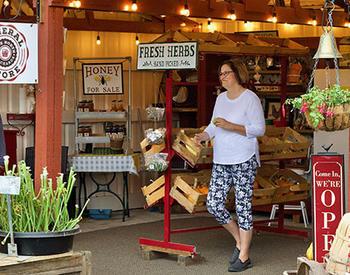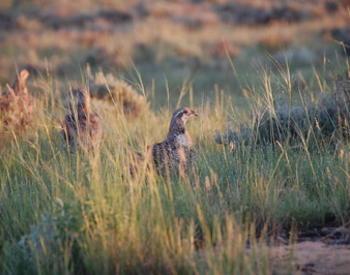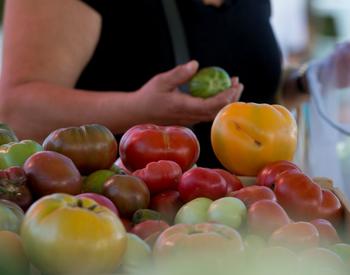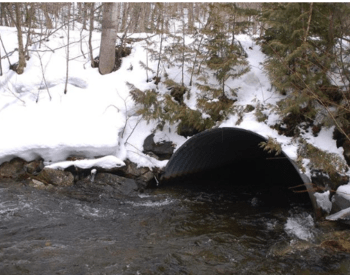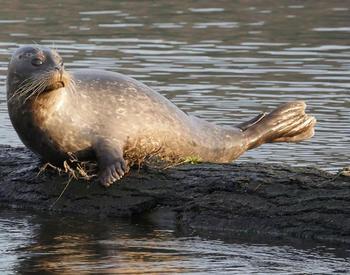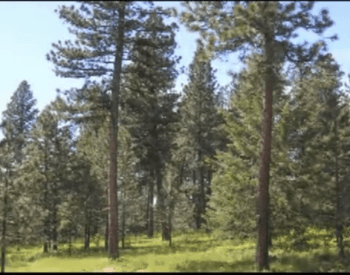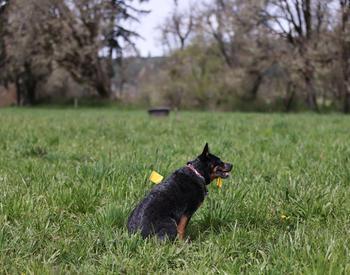Don't you just love looking out into your forest and spotting a songbird flitting about the shrubs, catching insects and sharing its sweet song?
Songbirds are just one of the many benefits of having your own forest. Some of you might even be expert birders just from having a pair of binoculars near your living room window.
But how do you keep those birds coming back year after year?
We'll give you some tips on how to maintain critical habitat characteristics for the many songbirds that may be visiting your property. You will even learn ways to increase the types of birds that visit.
Leaving just 10% of a stand of timber with hardwoods will significantly increase the number and variety of bird species present. Broadleaf trees provide essential habitat for many songbird species.
You can choose to spread the hardwood trees evenly across every acre, or you can leave them in islands or clumps to provide habitat for songbirds while minimizing the impact on growing conifers.
The best hardwood trees forest owners should leave to help wildlife species include:
- Bigleaf maple.
- Cherry.
- Dogwood.
- Madrone.
- Oregon white oak.
- Pacific crabapple.
- Willows.
In Central and eastern Oregon, leave quaking aspen, black cottonwood and willows.
You can also plant deciduous shrubs as a hedgerow along a forest or road edge. Deciduous shrubs provide a source of food, cover and nesting space for songbirds.
Designating clumps of shrubs pre-harvest is a good way to maintain shrubs on the landscape while decreasing competition with your planted trees. You can concentrate shrubs in one area.
If you have mature forest, create gaps in the canopy of ¼ acre to 1 acre in size to allow enough sunlight for your shrubs to develop and create seeds and berries. You can also plant them as a hedgerow along a forest or road edge.
Deciduous shrubs that are especially beneficial to songbirds include:
- Cascara.
- Elderberry.
- Hazel.
- Indian plum.
- Oceanspray.
- Red-flowering currant.
- Red-osier dogwood.
- Snowberry.
- Serviceberry.
- Thimbleberry.
- Salmonberry.
In Central and eastern Oregon, consider leaving bitterbrush, manzanita, bunchgrasses and Woods' rose.
Down wood in the form of root wads, bark, limbs and logs plays a critical function in the forest ecosystem. Did you know that the majority of our terrestrial wildlife species use dead standing and down wood as either a primary or secondary component of their habitat requirements in the Pacific Northwest?
Snags, or standing dead trees, are used for perching, as a source of food and as nesting habitat. When snags or live trees fall over, they become dead and down woody material. This material is important in nutrient cycling, natural regeneration and habitat for many wildlife species including arthropods (a main food source for songbirds).
Down wood is used for feeding sites, nest cavities within and under the wood, food sources, and hiding and thermal cover.
Consider these strategies for creating and maintaining dead wood in your forest.
- Retain existing snags where safe.
- Leave “extra” wildlife trees for future snag recruitment (the big wonky-looking trees that are of low economic value).
- Create snags by girdling or topping in areas they are lacking.
- Keep large-diameter down logs distributed throughout mature stands and harvest units instead of piling them into slash piles or moving them to landings.
- Contribute some large-diameter logs, and avoid mechanical damage and disturbance to existing down logs during commercial thinning operations. This will increase the amount of down wood as the stand ages.
- Look for opportunities to use unmerchantable portions of large-diameter logs as down wood.
Legacy trees encourage age diversity, and will eventually become snags or down wood.
Encourage a diversity of age classes of your live conifer trees. Live, standing conifers provide food, cover and nesting structure for songbirds.
If you are planning a clearcut harvest over 25 acres, a minimum of two standing live trees or snags per acre of harvest must be left behind. But retaining trees above the minimum provides even more habitat options. These legacy trees encourage age diversity and will eventually become snags or down wood. Legacy trees can be scattered throughout a harvest unit or left in clumps of more than 15 trees.
When selecting trees, opt for trees retained from prior entries and deformed trees.
Riparian buffers are important places to encourage songbird habitat. These are great places to house the variety of shrubs, hardwoods and conifer trees that songbirds use for resources. These trees' proximity to the water makes it easy for birds to stop off for a drink or find something to eat.
If possible, maintain or even increase your stream buffers to encourage riparian habitats.
Some songbird species rely on grasses and non-woody flowering plants. A weed-free, bird-friendly seed mix can be a great resource to maximize habitat. You can seed this mix in landings, cutbanks, edges, dirt roads, and, if appropriate, areas of a new harvest that won't compete with your newly planted trees.
Early seral, or young regenerating forests, are in decline across the Pacific Northwest. Estimates suggest as much as a 50% decline in early seral forests since the 19th and early 20th centuries.
Currently, early seral forests exist primarily on private lands due to the emphasis on late-successional and old-growth management goals on federal forestlands. Help create and maintain suitable habitat for early seral-associated songbirds by prolonging the period of time a forest is in this early seral stage.
This may conflict with wood production goals. But for some landowners, delaying crown closure is an option. You can delay crown closure by completing an early precommercial thinning or planting at a wider spacing. Just be sure to meet the minimum stocking requirements of the Oregon Forest Practices Rules after harvest.
Taking any of these steps will surely increase the music on your land. Enjoy the birds!





